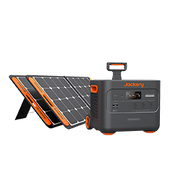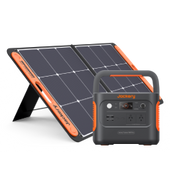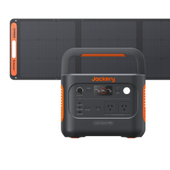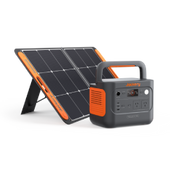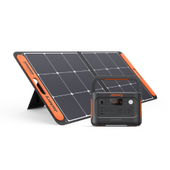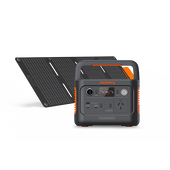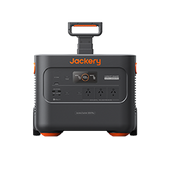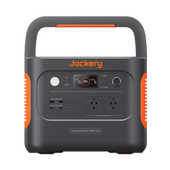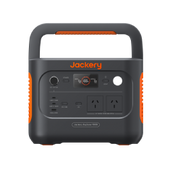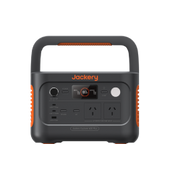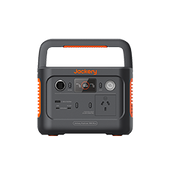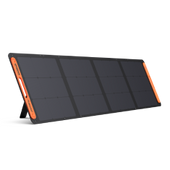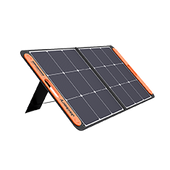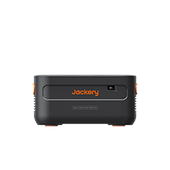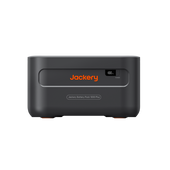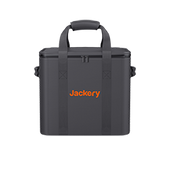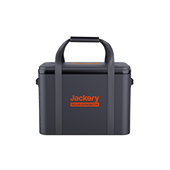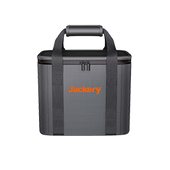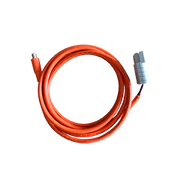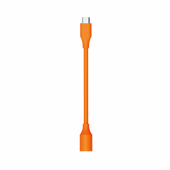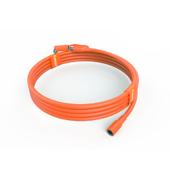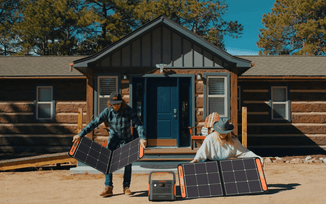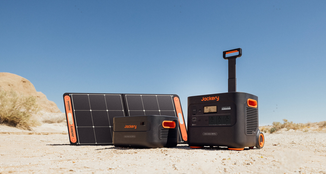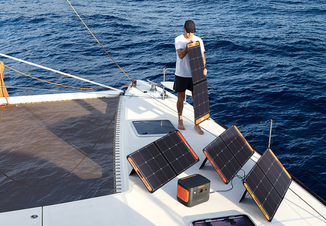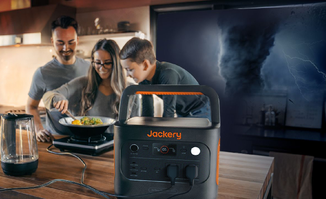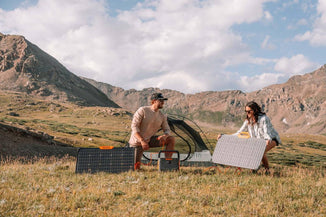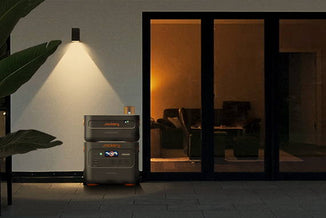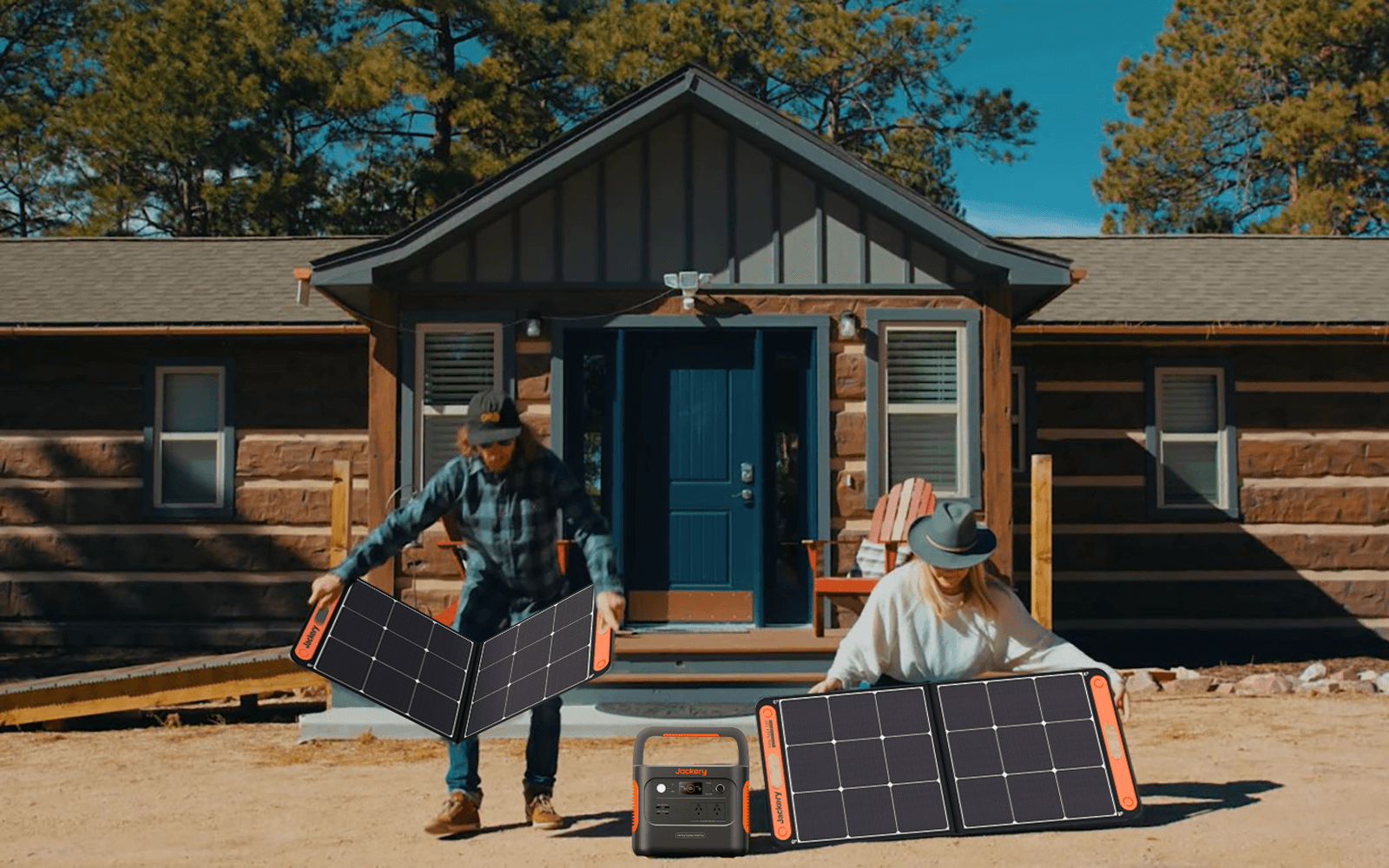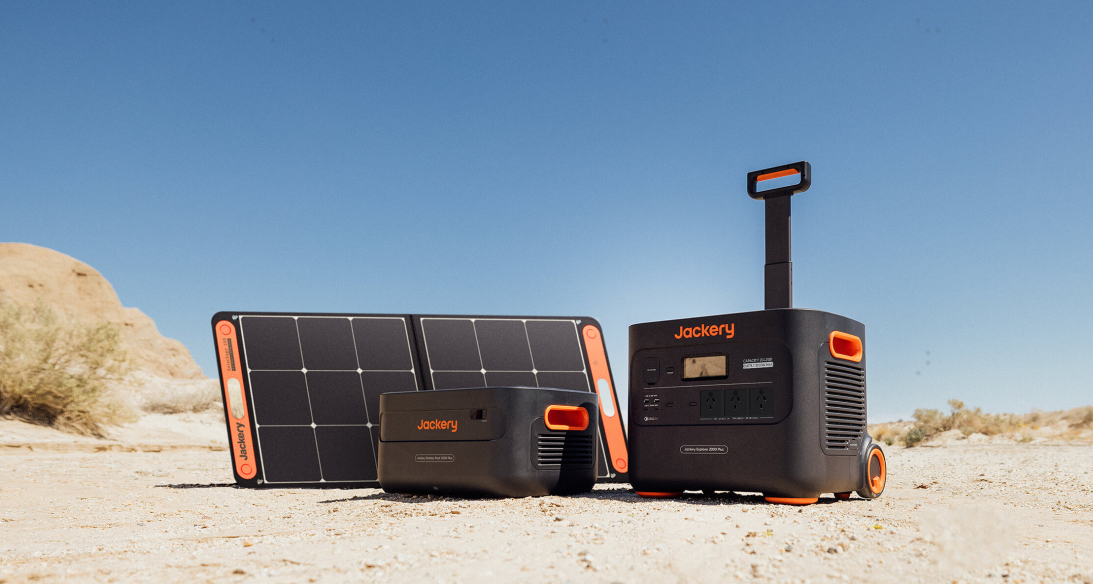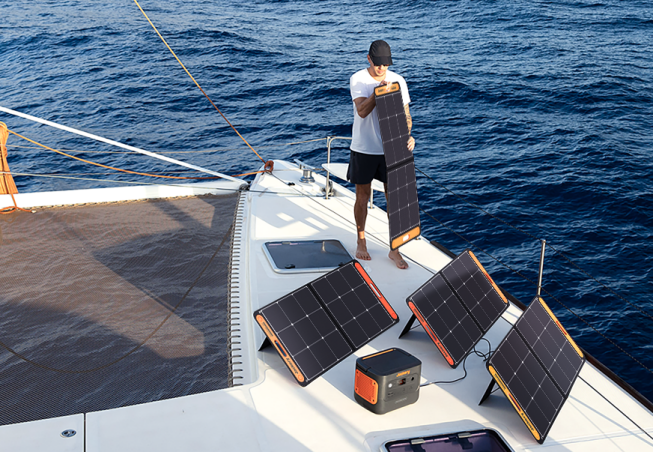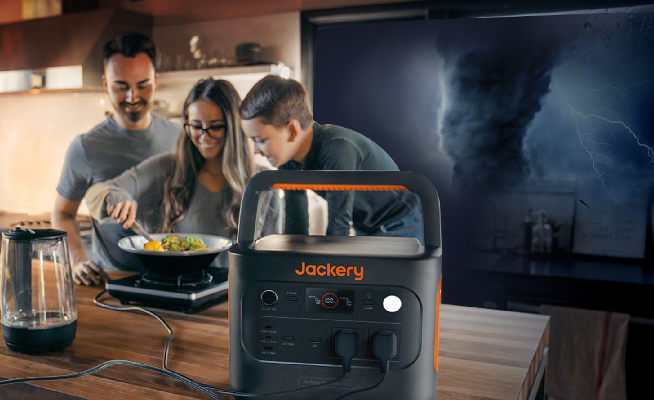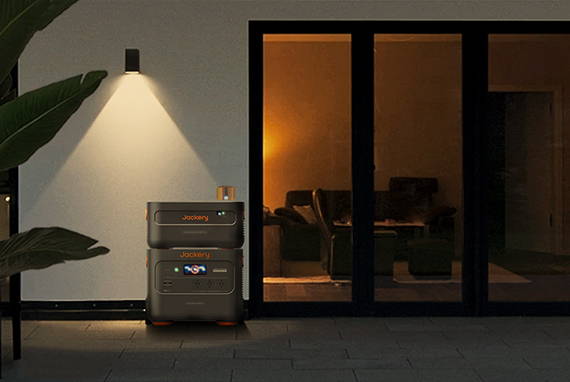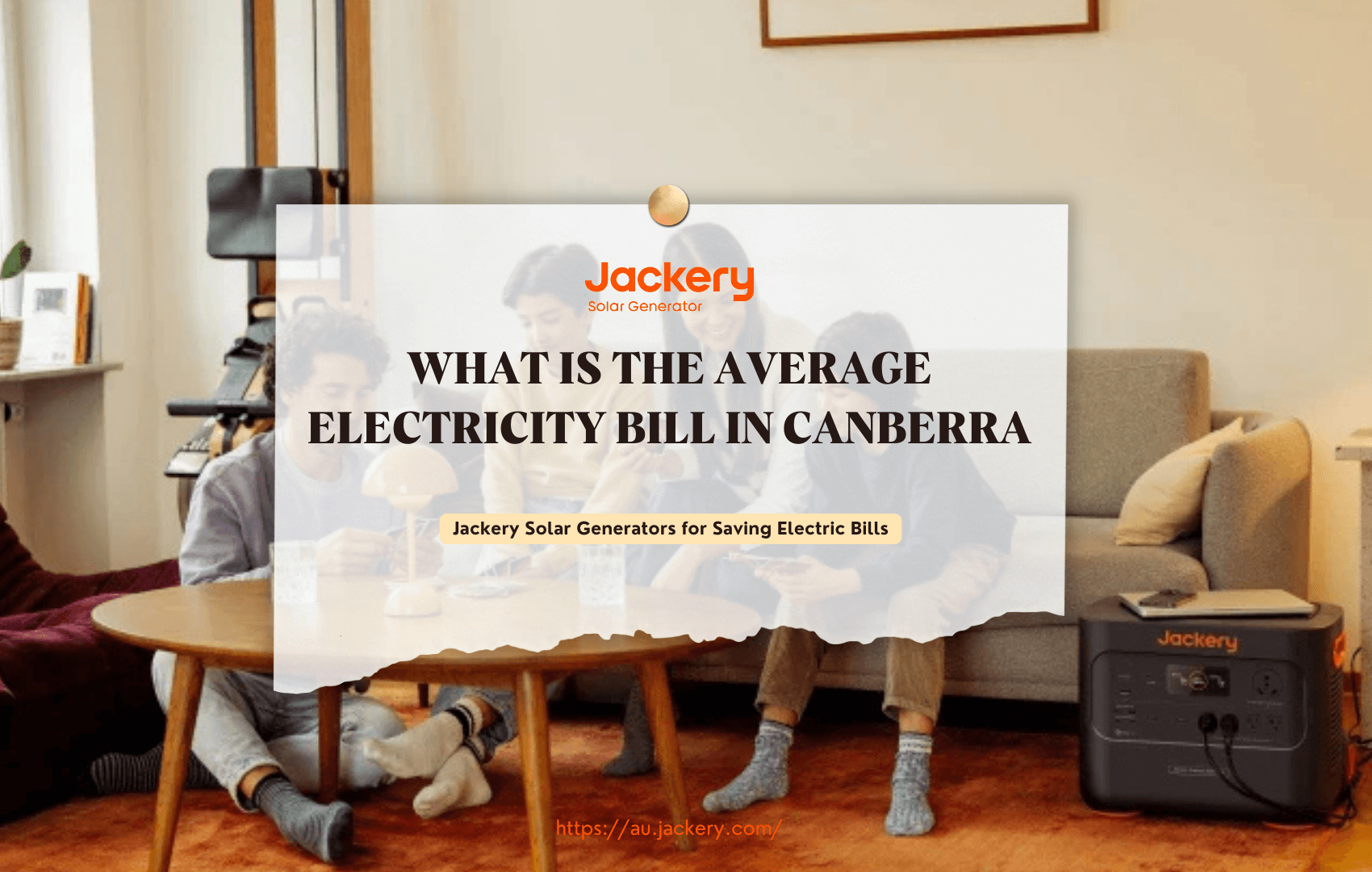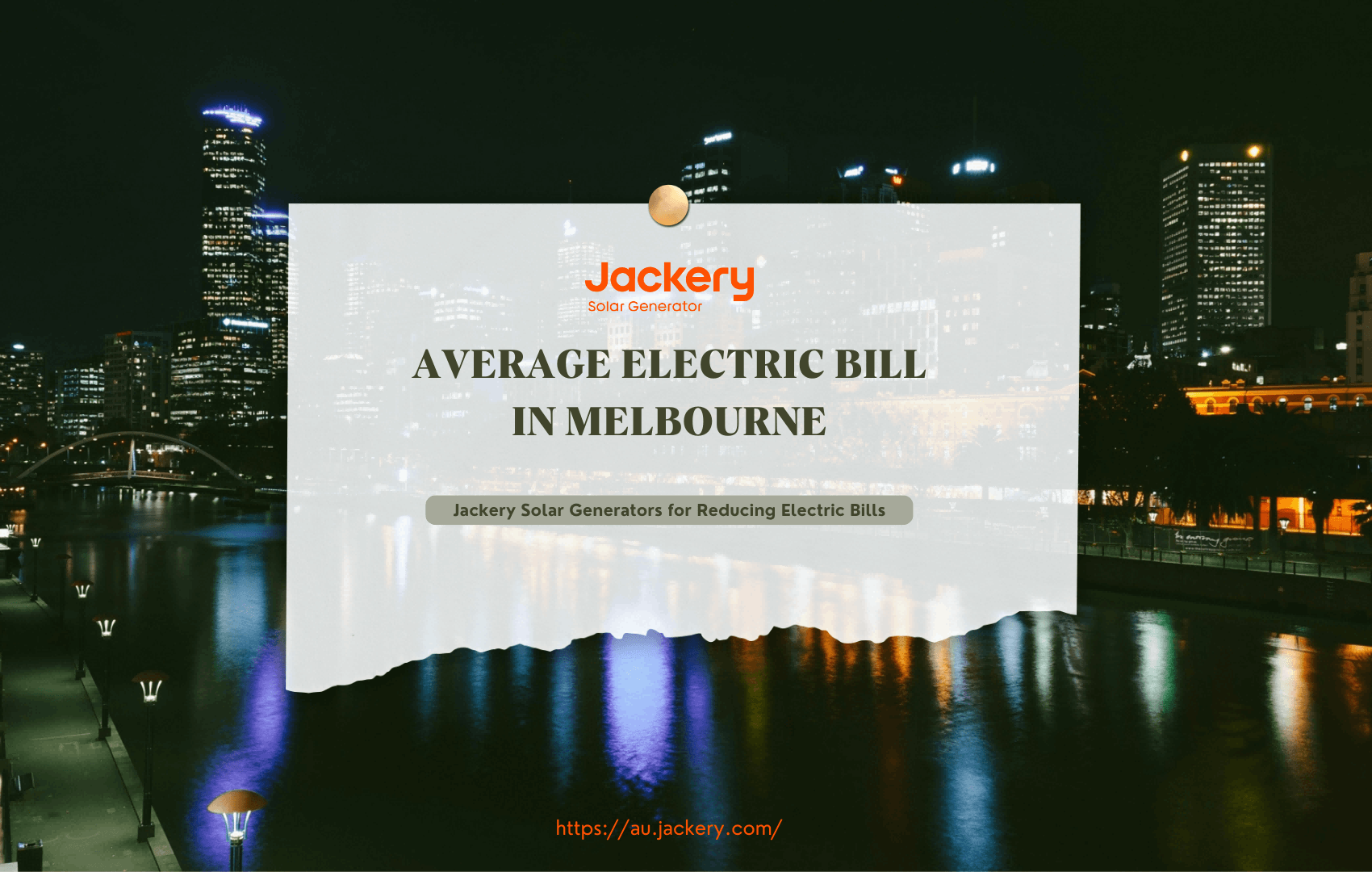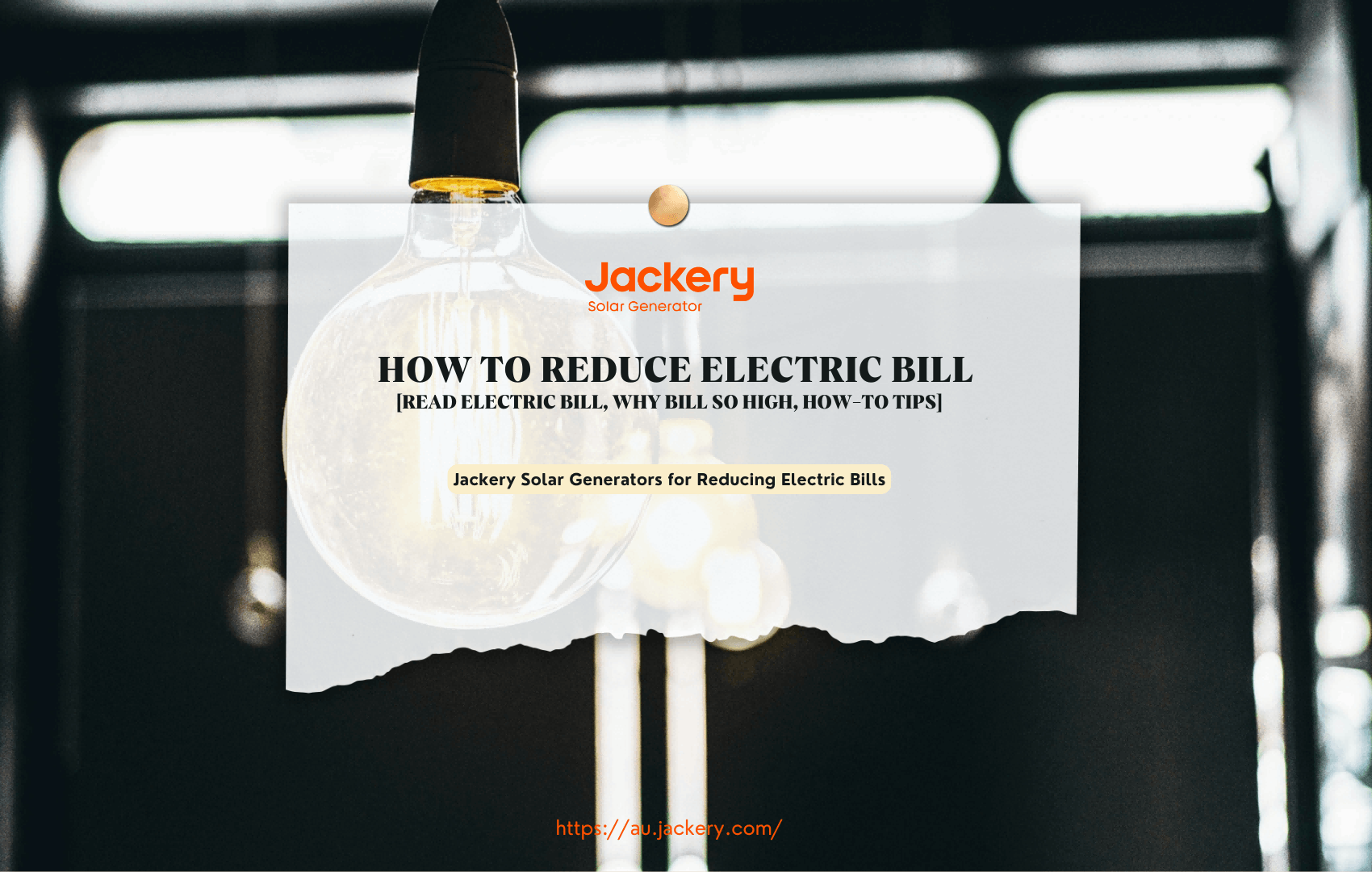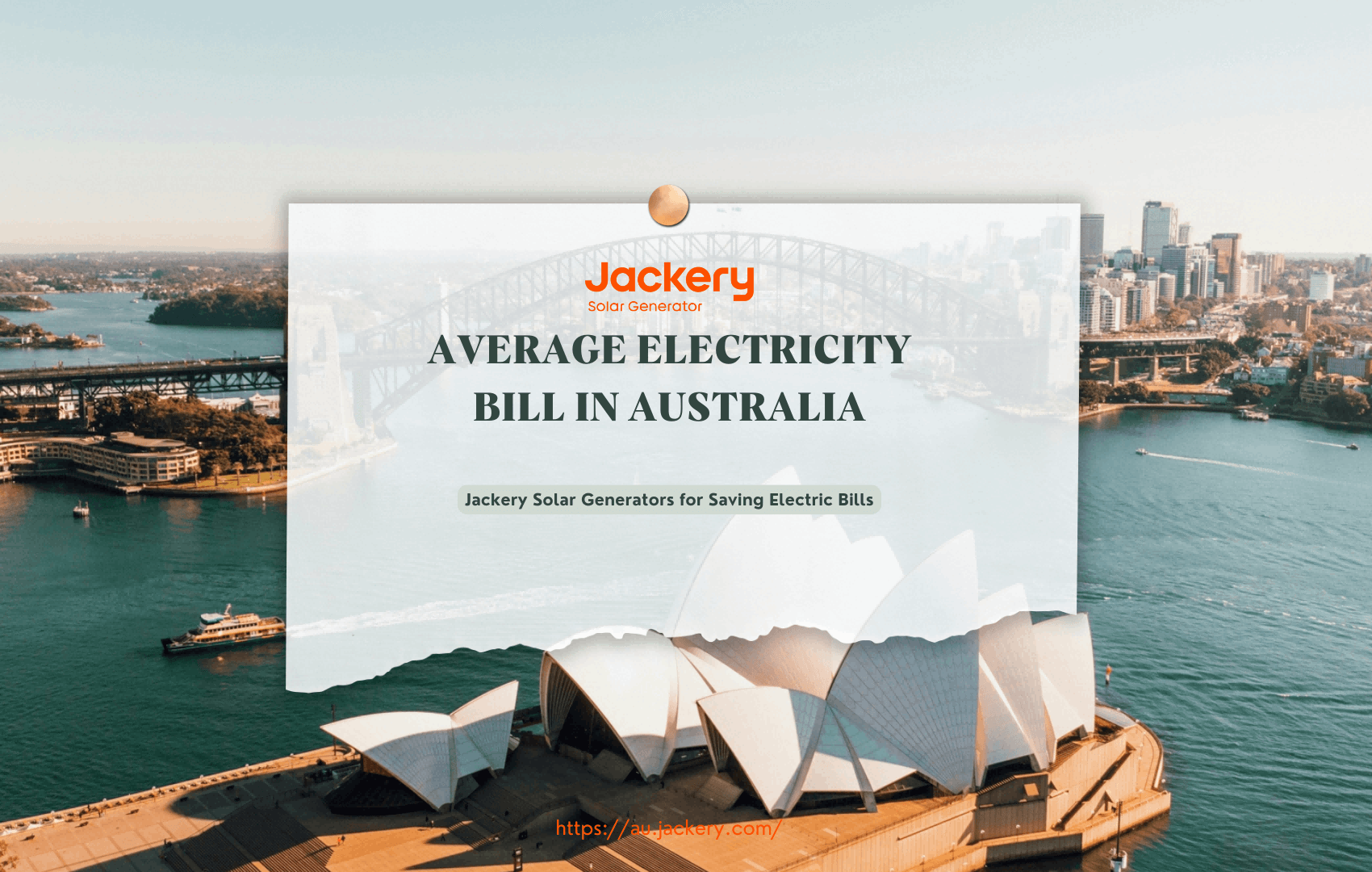|
Key Takeaways: |
|
• Expenses for two- to three-person homes are somewhat higher than those for single-person households. According to the findings, a third party could pay over $350 more per year for power to operate a home. • The fact that many over-65s qualify for state and territorial rebates and discounts might be the source of their reduced power costs. • Explore the benefits of incorporating the Jackery Solar Generator 2000 Plus and 1000 Pro into your solar setup to maximise energy efficiency and cost savings. • Of all Canberra's electricity, Origin Energy offers the lowest price. |
Average Electricity Bill in Canberra
The typical power bills shown below were obtained from a December 2023 survey of over 4,100 households by Canstar Blue. Households of all sizes are included in the expenses shown, which should only be used as a general reference.
|
State |
Average Quarterly Electricity Bill |
|
Western Australia |
$296 |
|
Queensland |
$315 |
|
Victoria |
$320 |
|
Australian Capital Territory |
$321 |
|
South Australia |
$352 |
|
New South Wales |
$345 |
|
Tasmania |
$372 |
Average Electricity Bill Based On Household Size
The average cost of energy rises with the number of inhabitants. Expenses for two- to three-person homes are higher than those for single-person households. According to the findings, a third party could pay over $350 more per year for power to operate a home.
|
Household Size |
Electricity Usage |
Average Electricity Bill |
|
1 Person Households |
Summer: 851 kWh Autumn: 987 kWh Winter: 1,543 kWh Spring: 980 kWh |
In Canberra, monthly average power bills for single-rate plans (flat use rates all the time) range from $85 to $197. |
|
2-Person Households |
Summer: 1,200 kWh Autumn: 1,468 kWh Winter: 2,042 kWh Spring: 1,397 kWh |
In Canberra, monthly average power bills for single-rate plans (flat use rates all the time) range from $111 to $265. |
|
3-Person Households |
Summer: 1,598 kWh Autumn: 1,859 kWh Winter: 2,485 kWh Spring: 1,780 kWh |
In Canberra, monthly average power bills for single-rate plans (flat use rates all the time) range from $135 to $328. |
|
4-Person Households |
Summer: 1,745 kWh Autumn: 2,303 kWh Winter: 3,313 kWh Spring: 2,181 kWh |
In Canberra, monthly average power bills for single-rate plans (flat use rates all the time) range from $161 to $398. |
|
5-Person Households |
Summer: 2,058 kWh Autumn: 2,492 kWh Winter: 3,313 kWh Spring: 2,287 kWh |
In Canberra, monthly average power bills for single-rate plans (flat use rates all the time) range from $170 to $422. |
Average Electricity Bill Based On Age Group
Do your power bills go down as you become older? The fact that many over-65s qualify for state and territorial rebates and discounts might be the source of their reduced power costs. However, these expenses could also be impacted in other ways.

Compared to the younger generation, who may reside in more prominent families with higher power consumption demands, the older generation is more likely to have solar systems installed in their homes. Additionally, young Australians are more likely to live in rental houses, where they might not be as concerned about getting a reasonable price on power.
|
Age Group |
Average Quarterly Electricity Bill |
|
18-29 Years |
$366 |
|
30-39 Years |
$376 |
|
40-49 Years |
$366 |
|
50-59 Years |
$358 |
|
60-69 Years |
$309 |
|
70 Years or More |
$268 |
Canberra (ACT) Electricity Plan
In Canberra and the ACT, there are presently eight power companies that cater to residential clients. They are as follows:
EnergyAustralia
EnergyAustralia, one of the biggest energy suppliers in Australia, serves more than 1.7 million people nationwide with a range of electricity and natural gas contracts. Their portfolio has thermal coal, natural gas, hydroelectric, solar, and wind power-producing facilities.
EnergyAustralia advocates for clear-cut plans and affordable rates, with additional benefits available to gas and electric users. Additionally, their digital account access and easy online sign-up procedure are aspects of their award-winning customer service.
ActewAGL
ActewAGL, a local energy provider with almost a century of experience in the ACT, was founded in Canberra. Their comprehensive energy includes sun, gas, and electricity.
ActewAGL combines cutting-edge products with conventional customer care to offer customers the best of both worlds. Benefits include excellent plans, affordable prices, and flexible payment schedules.
There are other electricity providers:
- Amber Electric
- CovaU
- Energy Locals
- Nectr
- Origin Energy
Which provider has the cheapest electricity plans in Canberra?
Origin Energy has some of the lowest power costs in the Australian Capital Territory. Red Energy and ActewAGL come after this. Please refer to the table below for a complete comparison of costs.

In this table, we have compared the costs of the Evoenergy network. From Tennent to Gungahlin, this is present. We display a single product per retailer, arranged in order of lowest estimated price. Please refer to this page for details on the ICRC Reference Price.
Based on an annual average energy consumption of 6,100 kWh, the ICRC Reference Price for a residential user on a single rate tariff is $2,152. Please visit merchant websites for the most recent information since our database might only include some discounts available in your region.
ACT (Canberra) Solar Feed-in Tariffs
You may get paid for any power you send back to the grid that is not utilised using a feed-in tariff (FiT). Often paid as a credit on your bills, it is a fixed fee per kilowatt hour and is usually referred to as a buy-back rate. Your solar and electricity rates have different terms and conditions, but if you're a qualified solar-generating client, you can receive a solar FiT with any of our power plans.
Canberran households can also select their electrical plan if an appropriate meter is installed. An electrical tariff describes the price at which consumers purchase power. You have two options: pay a single rate for all your power use or pay separate charges for different use levels (block rate).
Additionally, you may be charged a variable cost for power based on the time of day (time of usage pricing). Select the tariff best suits your unique energy use patterns to receive the best bargain possible.
|
Provider |
Minimum Feed-in Tariff (kWh) |
Maximum Feed-in Tariff (kWh) |
|
ActewAGL |
10c |
15c (for first 15kWh/day, 11c/kWh thereafter) |
|
Amber |
4.9c |
4.9c (estimated based on wholesale prices) |
|
CovaU Energy |
5.5c |
5.5c |
|
Discover Energy |
TBC |
TBC |
|
EnergyAustralia |
7.6c |
12c (first 15kWh/day, 7.6c thereafter) |
|
Energy Locals |
7.0c |
7.1c |
|
Nectr |
0c |
0c |
|
Origin Energy |
12c (for first 14kWh/day, 10c/kWh thereafter) |
12c (for first 14kWh/day, 10c/kWh thereafter) |
|
Radian Energy |
TBC |
TBC |
|
Red Energy |
6c |
6c |
ActewAGL, EnergyAustralia, Energy Locals, and Origin Energy provide these rates. Additionally, they offer a regulated load option that charges users of dedicated networks at a reduced fee for high-use items like water heaters.
3 Best Solar Plan In Canberra
ACT offers a wide range of solar programs, all of which have attractive feed-in tariffs. However, selecting the best plan involves more than just the FiT, so we go over other crucial aspects of every solar plan, such as incentives, fixed and variable rates, and more. Please be aware that schedules might alter.

ActewAGL - Solar Saver - 1st Place
First on the list is ActewAGL's Solar Saver package. ActewAGL states that this solar plan aims to maximise the value of your solar system and provide clean, renewable energy for your house.
This plan gives solar owners excellent value for their money due to its competitive rate and substantial feed-in tariff.
Some features of this plan include:
- 12c/kWh
- Zero exit fees
- No lock-in contracts
Origin Energy - Solar Boost - 2nd Place
The Solar Boost package from Origin Energy comes in second. Origin Energy claims this plan is designed especially for houses with solar panels installed. Customers have no lock-in contracts or exit costs, so they may quit whenever they choose.
When you combine this with a competitive FiT, you have a solar plan that is both alluring and worthy of consideration. This method works well for solar owners who export a lot of energy, but it is not optimal for those who buy a lot of electricity from the grid.
Some features of this plan include:
- 12c/kWh
- Zero exit fees
- Mobile App
Energy Australia - Solar Max - 3rd Place
Third Place goes to Energy Australia's Solar Max initiative. According to Energy Australia, this plan has the highest FiT when you export less than 12kWh per day. In addition, this plan has no lock-in contracts, flexible rates, and no departure costs. This plan is ideal if you have a high export rate and need less grid electricity.
Some features of this plan include:
- 12c/kWh
- Zero exit fees
- Variable energy rates for 12 months
Why is Your Electricity Bill So High?
The following are some of the most typical explanations for why your energy cost can be higher than usual:
A change in the season. Switching from fall or spring to winter or summer may impact your cost. You may need extra energy in the winter for the clothes dryer, lighting, and heating. The air conditioner may use a lot of electricity during the summer. To determine if your bill was the same as last year, compare it to the same time this year.
Renovate your house. Are you updating the bathroom or kitchen when you do so? Are plumbers or builders on the job site? Construction work uses more energy than usual.
New roommates or guests. If more people live in your house than usual, your power cost may increase. More significant numbers of people mean higher energy usage in the laundry room and kitchen.
Installing new appliances. You'll notice a shift in your power use if you recently installed anything for the first time, such as a clothes dryer, and are using it frequently.
An extended billing period. The billing period's day count may occasionally grow, increasing your charge.
How to Save Your Electricity Bill in Canberra
The capital area has a long-standing commitment to a better and cleaner future regarding energy. As part of their ACT Climate Change Strategy, the ACT Government strives for net zero emissions by 2045, demonstrating our unwavering commitment.
What can be done to lower your energy consumption? Although our demand for renewable energy sources does not diminish, neither does their cost.

Household Electricity Saving Tips
If your consumption patterns have altered recently, update your plan. Adding new family members or spending more time at home might raise operating expenses. Likewise, you could have a better option with solar panels or an electric car charging station. ActewAGL and other vendors provide a range of customised options to meet your needs.
Tip 1: Purchase energy-efficient appliances.
While the initial cost of energy-efficient appliances may be higher, they often result in cost savings over time. An appliance's energy rating is the best way to evaluate it; the most efficient appliances have ratings between four and six stars. Regarding your current equipment, making little adjustments like turning on built-in timers or only running your dishwasher or washing machine when it's complete will help you use as little energy as possible.
Tip 2: Make a suitable insulation house with adequate insulation.
It lessens the need for heating and cooling systems by delaying the passage of hot or cold air. Shade sails, pergolas, and outdoor awnings are exterior modifications that protect a house from the summer sun. In contrast, interior blinds or curtains reduce heat seepage during the winter. While you're at it, seal small leaks around doors and windows. Draughts may cause up to 25% heat loss, so it makes sense to remedy them.
Tip 3: Cut it off at the wall.
It's interesting to note that standby power can make up over 10% of the electricity used in an average household. Turn off any unused appliances at the power switch to save money. Additionally, consider using timer switches and power-saving features to turn devices off at certain times.
Tip 4: Choose renewable energy.
Selecting a solar energy system offers significant advantages, including cost savings on electricity bills, environmental sustainability by lowering reliance on fossil fuels, energy independence, increased home value, low maintenance requirements, and access to possible government incentives; basically, it offers a clean, renewable energy source that can greatly lower your carbon footprint over time.
Solar energy offers a clean, renewable energy source that can significantly lower your carbon footprint. If you want to try solar power with a limited budget, consider investing in a solar generator first. Here, we highly recommend Jackery Solar Generator, which combines Jackery Solar Panels with a Portable Power Station to utilise solar energy fully.
Business Electricity Saving Tips
Tip 1: Invest in energy-efficient technology.
Most firms use electrically driven equipment. Consider investing in energy-efficient machinery to save operating expenses. Appliances and gadgets that are energy efficient can save up to two-thirds of your energy bill. For instance, inkjet printers use up to 90% less energy than their laser counterparts, while laptops use roughly 80% less than desktop computers.
Tip 2: Enhance illumination.
Natural light is one of the most straightforward and crucial methods of creating a well-lit workspace. Make the most of workplaces near windows to minimise your need for artificial lighting. If you use artificial lighting, think about selecting more energy-efficient solutions. For example, LEDs consume up to 75% less energy than fluorescent or incandescent lamps. Motion sensors are also helpful in less-frequented regions.
Tip 3: maximise heating and cooling.
If your present climate system isn't performing up to par, it would be a good idea to make a new purchase at this time. Think about switching to an energy-efficient system customised to meet your demands. Efficiency may be maximised by combining this with an energy management system. Remember that all system components should be maintained and refer to the ideal seasonal temperature settings.
Tip 4: Improve insulation.
Insulation works wonders in lowering energy use and expenses. Workplaces may be kept warm in the winter and cooled in the summer by taking easy measures like installing internal or outdoor shades. Lastly, evaluate if the insulation on the walls or ceiling is enough and make the necessary upgrades or installations.
Jackery Solar Generators Explained
Adopting a solar energy solution can be a wise strategy to reduce household spending in Canberra, where electricity prices often fluctuate. Leading solar technology company Jackery provides a variety of high-quality solar generators, solar panels, and portable power stations that are intended to make solar energy efficient and accessible.

Jackery Solar Generators provide a sustainable and steady power source, allowing you to reduce dependency on the grid and lower your electricity bills. Combined with Jackery Solar Panels, a Portable Power Station will enable you to harness and store solar energy efficiently, ensuring you have reserve power. Its multiple output ports make it convenient to power and charge various household devices simultaneously, even during power outages.
|
Appliances |
Working Hours |
|
|
Jackery Solar Generator 2000 Plus (2-12 kWh) |
Jackery Solar Generator 1000 Pro (1002Wh) |
|
|
Fridge (700W) |
2.6-14.6H |
1.2H |
|
Coffee Maker (550W) |
3.3-18.5H |
1.5H |
|
TV (60W) |
30.6-170H |
14.2H |
|
Kettle (800W) |
2.3-12.8H |
1.1H |
|
Lighting (30W) |
61.2-340H |
28.4H |
Jackery Solar Generator 2000 Plus
In Canberra, where energy costs can add up quickly, the Jackery Solar Generator 2000 Plus offers an intelligent alternative to help you cut down on electricity bills. With an expandable capacity that ranges from 2 kWh up to 12 kWh, this solar generator provides an efficient solution for off-grid power. Whether you're looking to power essential household devices like lights, refrigerators, or even larger appliances during power outages, the 2000 Plus has the versatility to meet your energy needs.
This model supports up to five add-on battery packs (sold separately), making it suitable for households seeking a reliable energy backup for days. With LiFePO4 battery technology for a 10-year lifespan and ChargeShield protection for device safety, this generator is built for long-term savings.
It's quiet, emission-free, and offers a clean, renewable energy source that can drastically reduce your reliance on traditional power sources. For those aiming to lower their electricity bills in Canberra, the Jackery Solar Generator 2000 Plus provides peace of mind and sustainable energy for your home.

- Massive Battery Capacity: With a whopping 2042.8Wh capacity, powered by LFP (LiFePO4 battery) cell chemistry, you can keep your devices running for more extended periods without worrying about running out of juice.
- High-Powered Outputs: Enjoy up to 3000W of continuous AC power, 100W of USB-C power, and Quick Charge 3.0 technology for rapid charging.
- Fast Charging: Say goodbye to long recharging waits. With the included AC adapter, you can fully recharge the Explorer 2000 Plus in just 1.7 hours, ensuring minimal downtime between adventures.
|
*Review from Our User |
|
Five years ago, I began my journey with vanlife camping and discovered Jackery through a vanlife YouTuber. I bought the Explorer 240 in 2020 and got another one for backup the following year. These are excellent products for powering my compact refrigerator and outdoor lighting. It's impressive that even after 4 years of continuous use with two models alternating, they remain fully charged and function effectively. I recently bought a new 2000 Plus for my home. |
Jackery Solar Generator 1000 Pro
If you're seeking a more compact solar power solution in Canberra, the Jackery Solar Generator 1000 Pro delivers reliable performance with a 1002Wh capacity and a 1000W output (2000W peak). Ideal for powering everyday devices, this portable generator supports up to 93% of essential household appliances, ensuring you're well-prepared during unexpected power outages or simply looking to save on energy costs.
The Explorer 1000 Pro boasts an ultra-fast charging time of 1.8 hours via AC adapter or 7 hours with SolarSaga panels. Its advanced MPPT technology ensures efficient solar charging, helping you maximise Canberra's sunny days for maximum energy savings. The LiFePO4 battery has an impressive 10-year lifespan, providing reliable energy and minimal environmental footprint.
With its whisper-quiet operation and eco-friendly design, the Jackery Solar Generator 1000 Pro is a powerful option for reducing electricity expenses while contributing to sustainable energy use in Canberra.

- Up to 10-Year Battery Life: The exclusive recharging algorithm ensures 80% battery capacity remains, even after 1000 charging cycles.
- Superior Safety: Intelligent BMS technology provides 12 levels of protection against overvoltages, high temperatures, short circuits and more.
- Compact and Portable: Explorer 1000 Pro weighs only 11.5 kg, which is approximately 70% less weight and size than alternatives with the same capacity.
|
*Review from Our User |
|
After considering it for a couple of years, I finally purchased the 1000 Pro Solar Generator and a 100W solar panel. The power I currently have takes days to charge, but with the Jackery, I can achieve a full charge in just 2.5 hours using my petrol generator or home electricity. Alternatively, I can use the solar panel for a complete charge in 8-9 hours. |
Average Electricity Bill in Canberra FAQs
The following are the frequently asked questions about the average electricity bill in Canberra.
- Is Canberra expensive to live in?
The world's most significant cost of living database, Numbeo, ranks Canberra as the 21st most expensive city globally and has Australia's highest cost of living.
- Which Australian state has the highest power bills?
South Australia (SA): SA Power Networks is the sole distribution network in SA. With an average power rate of 45.3c/kWh, this network is the most costly in Australia in terms of electricity costs. This is because renewable energy sources, which might be more expensive to create, are heavily relied upon in South Africa.
- How much electricity does an average house use in Australia?
In 2023, the Australian Energy Regulator reported that a three-person home's average daily energy use was around 18.71 kilowatt-hours (kWh). Generally, a four-person home consumes around 21.355 kWh daily; a five-person household uses approximately 25.43 kWh daily.
Final Thoughts
In conclusion, various factors affect Canberra's average electricity bill, including home size, usage patterns, and appliance efficiency. Households can control and lower these expenses, though, by being proactive. Electricity expenses can be reduced by installing energy-efficient appliances, employing solar panels with advantageous feed-in tariffs, and implementing energy-conscious behaviours like shutting off unneeded gadgets. By adopting these techniques, Canberra residents can save money and promote environmental sustainability.

